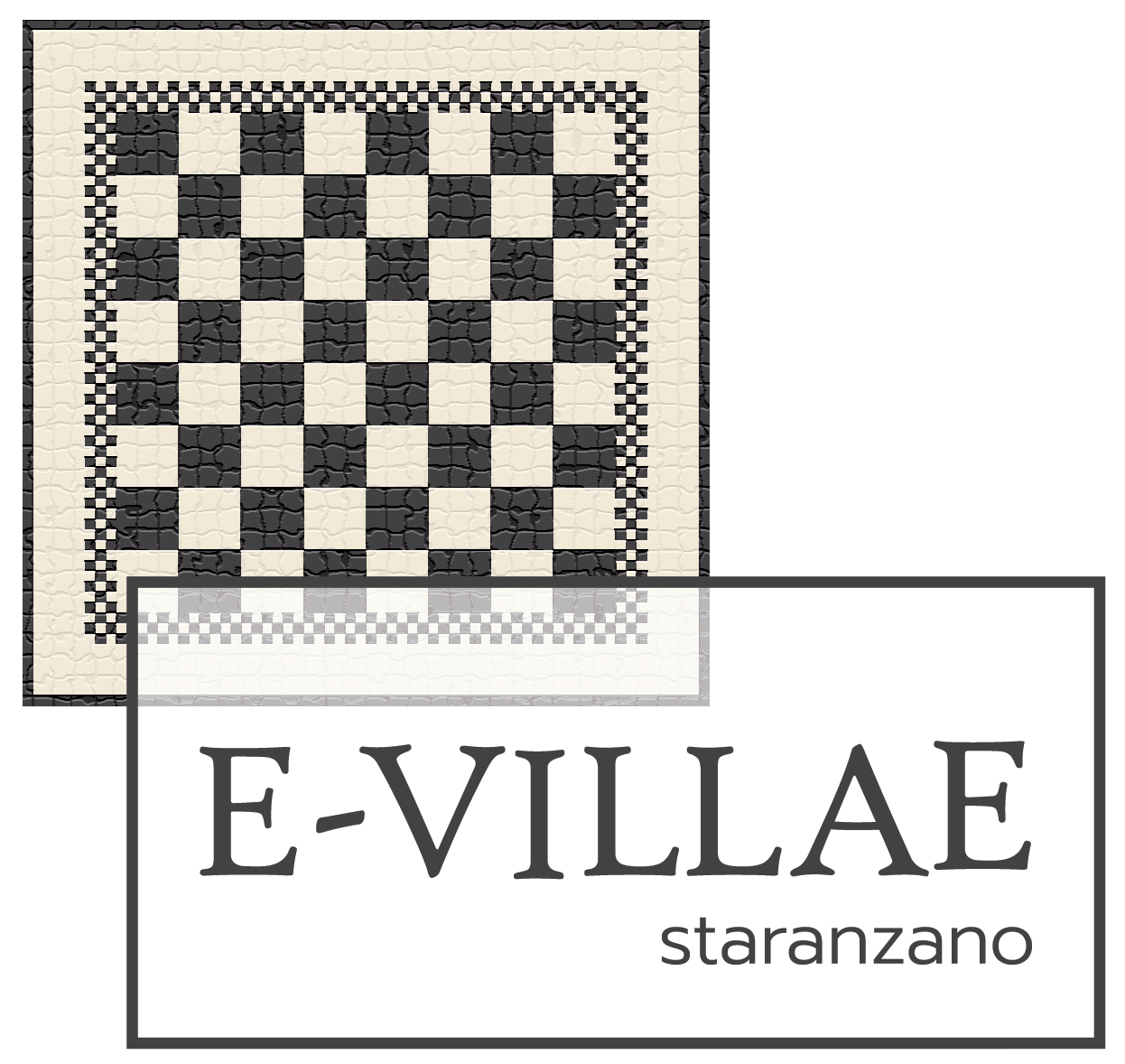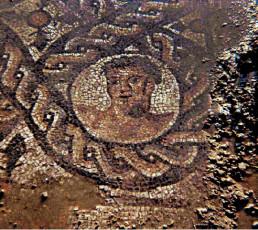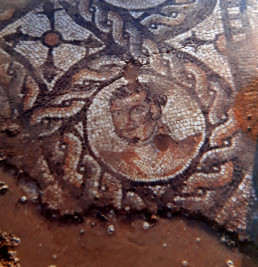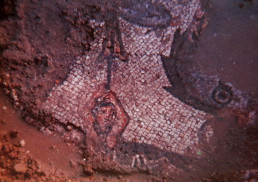In the territory of San Canzian d'Isonzo, about two kilometers south of today's settlement, where the medieval mill of Rondon stood, fragments of a richly decorated polychrome mosaic floor, referable to the first half of the 3rd century A.D.The mosaic is documented only by photographs taken at the time of its discovery and was covered soon after by buildings of agricultural use.
It featured depictions of busts of athletes alternating with captions in Greek, enclosed in circular fields bordered by two-headed braids.
One section of the floor was decorated with a marine scene, very lacunar, of which only part of a cupid and a sea monster were preserved.
Although there is a lack of data on the structures and their extent, scholars believe that these mosaics were part of a large residential complex of the highest level equipped with baths, since the association of figures of athletes and marine scenes finds comparison with typical decorations in Roman-era bathhouse environments.



